Delta Airlines 2006 Annual Report Download - page 78
Download and view the complete annual report
Please find page 78 of the 2006 Delta Airlines annual report below. You can navigate through the pages in the report by either clicking on the pages listed below, or by using the keyword search tool below to find specific information within the annual report.-
 1
1 -
 2
2 -
 3
3 -
 4
4 -
 5
5 -
 6
6 -
 7
7 -
 8
8 -
 9
9 -
 10
10 -
 11
11 -
 12
12 -
 13
13 -
 14
14 -
 15
15 -
 16
16 -
 17
17 -
 18
18 -
 19
19 -
 20
20 -
 21
21 -
 22
22 -
 23
23 -
 24
24 -
 25
25 -
 26
26 -
 27
27 -
 28
28 -
 29
29 -
 30
30 -
 31
31 -
 32
32 -
 33
33 -
 34
34 -
 35
35 -
 36
36 -
 37
37 -
 38
38 -
 39
39 -
 40
40 -
 41
41 -
 42
42 -
 43
43 -
 44
44 -
 45
45 -
 46
46 -
 47
47 -
 48
48 -
 49
49 -
 50
50 -
 51
51 -
 52
52 -
 53
53 -
 54
54 -
 55
55 -
 56
56 -
 57
57 -
 58
58 -
 59
59 -
 60
60 -
 61
61 -
 62
62 -
 63
63 -
 64
64 -
 65
65 -
 66
66 -
 67
67 -
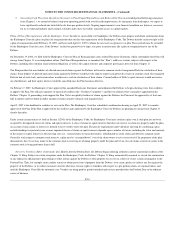 68
68 -
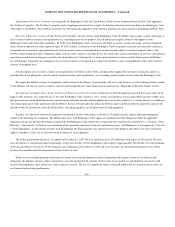 69
69 -
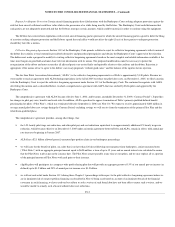 70
70 -
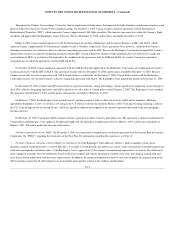 71
71 -
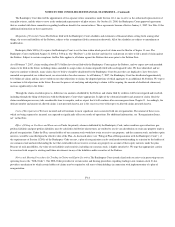 72
72 -
 73
73 -
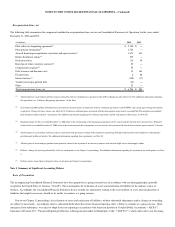 74
74 -
 75
75 -
 76
76 -
 77
77 -
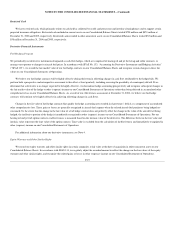 78
78 -
 79
79 -
 80
80 -
 81
81 -
 82
82 -
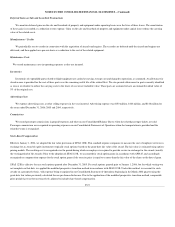 83
83 -
 84
84 -
 85
85 -
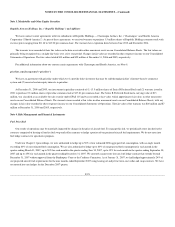 86
86 -
 87
87 -
 88
88 -
 89
89 -
 90
90 -
 91
91 -
 92
92 -
 93
93 -
 94
94 -
 95
95 -
 96
96 -
 97
97 -
 98
98 -
 99
99 -
 100
100 -
 101
101 -
 102
102 -
 103
103 -
 104
104 -
 105
105 -
 106
106 -
 107
107 -
 108
108 -
 109
109 -
 110
110 -
 111
111 -
 112
112 -
 113
113 -
 114
114 -
 115
115 -
 116
116 -
 117
117 -
 118
118 -
 119
119 -
 120
120 -
 121
121 -
 122
122 -
 123
123 -
 124
124 -
 125
125 -
 126
126 -
 127
127 -
 128
128 -
 129
129 -
 130
130 -
 131
131 -
 132
132 -
 133
133 -
 134
134 -
 135
135 -
 136
136 -
 137
137 -
 138
138 -
 139
139 -
 140
140 -
 141
141 -
 142
142 -
 143
143 -
 144
144 -
 145
145 -
 146
146 -
 147
147 -
 148
148 -
 149
149 -
 150
150 -
 151
151 -
 152
152 -
 153
153 -
 154
154 -
 155
155 -
 156
156 -
 157
157 -
 158
158 -
 159
159 -
 160
160 -
 161
161 -
 162
162 -
 163
163 -
 164
164 -
 165
165 -
 166
166 -
 167
167 -
 168
168 -
 169
169 -
 170
170 -
 171
171 -
 172
172 -
 173
173 -
 174
174 -
 175
175 -
 176
176 -
 177
177 -
 178
178 -
 179
179 -
 180
180 -
 181
181 -
 182
182 -
 183
183 -
 184
184 -
 185
185 -
 186
186 -
 187
187 -
 188
188 -
 189
189 -
 190
190 -
 191
191 -
 192
192 -
 193
193 -
 194
194 -
 195
195 -
 196
196 -
 197
197 -
 198
198 -
 199
199 -
 200
200 -
 201
201 -
 202
202 -
 203
203 -
 204
204 -
 205
205 -
 206
206 -
 207
207 -
 208
208 -
 209
209 -
 210
210 -
 211
211 -
 212
212 -
 213
213 -
 214
214 -
 215
215 -
 216
216 -
 217
217 -
 218
218 -
 219
219 -
 220
220 -
 221
221 -
 222
222 -
 223
223 -
 224
224 -
 225
225 -
 226
226 -
 227
227 -
 228
228 -
 229
229 -
 230
230 -
 231
231 -
 232
232 -
 233
233 -
 234
234 -
 235
235 -
 236
236 -
 237
237 -
 238
238 -
 239
239 -
 240
240 -
 241
241 -
 242
242 -
 243
243 -
 244
244 -
 245
245 -
 246
246 -
 247
247 -
 248
248 -
 249
249 -
 250
250 -
 251
251 -
 252
252 -
 253
253 -
 254
254 -
 255
255 -
 256
256 -
 257
257 -
 258
258 -
 259
259 -
 260
260 -
 261
261 -
 262
262 -
 263
263 -
 264
264 -
 265
265 -
 266
266 -
 267
267 -
 268
268 -
 269
269 -
 270
270 -
 271
271 -
 272
272 -
 273
273 -
 274
274 -
 275
275 -
 276
276 -
 277
277 -
 278
278 -
 279
279 -
 280
280 -
 281
281 -
 282
282 -
 283
283 -
 284
284 -
 285
285 -
 286
286 -
 287
287 -
 288
288 -
 289
289 -
 290
290 -
 291
291 -
 292
292 -
 293
293 -
 294
294 -
 295
295 -
 296
296 -
 297
297 -
 298
298 -
 299
299 -
 300
300 -
 301
301 -
 302
302 -
 303
303 -
 304
304 -
 305
305 -
 306
306 -
 307
307 -
 308
308 -
 309
309 -
 310
310 -
 311
311 -
 312
312 -
 313
313 -
 314
314
 |
 |

NOTES TO THE CONSOLIDATED FINANCIAL STATEMENTS – (Continued)
Restricted Cash
We have restricted cash, which primarily relates to cash held as collateral by credit card processors and interline clearinghouses and to support certain
projected insurance obligations. Restricted cash included in current assets on our Consolidated Balance Sheets totaled $750 million and $870 million at
December 31, 2006 and 2005, respectively. Restricted cash recorded in other noncurrent assets on our Consolidated Balance Sheets totaled $52 million and
$58 million at December 31, 2006 and 2005, respectively.
Derivative Financial Instruments
Fuel Hedging Program
We periodically use derivative instruments designated as cash flow hedges, which are comprised of heating oil and jet fuel swap and collar contracts, to
manage our exposure to changes in aircraft fuel prices. In accordance with SFAS No. 133, “Accounting for Derivative Instruments and Hedging Activities”
(“SFAS 133”), we record the fair market value of our fuel hedge contracts on our Consolidated Balance Sheets and recognize certain changes in these fair
values on our Consolidated Statements of Operations.
We believe our fuel hedge contracts will be highly effective during their term in offsetting changes in cash flow attributable to the hedged risk. We
perform both a prospective and retrospective assessment to this effect at least quarterly, including assessing the possibility of counterparty default. If we
determine that a derivative is no longer expected to be highly effective, we discontinue hedge accounting prospectively and recognize subsequent changes in
the fair market value of the hedge to other (expense) income on our Consolidated Statements of Operations rather than being deferred in accumulated other
comprehensive loss on our Consolidated Balance Sheets. As a result of our effectiveness assessment at December 31, 2006, we believe our fuel hedge
contracts will continue to be highly effective in achieving offsetting changes in cash flows.
Changes in the fair value of fuel hedge contracts that qualify for hedge accounting are recorded in shareowners’ deficit as a component of accumulated
other comprehensive loss. These gains or losses are generally recognized in aircraft fuel expense when the related aircraft fuel purchases being hedged are
consumed. To the extent that the change in the fair value of a fuel hedge contract does not perfectly offset the change in the value of the aircraft fuel being
hedged, the ineffective portion of the hedge is immediately recognized in other (expense) income on our Consolidated Statements of Operations. For our
heating oil and jet fuel option contracts, ineffectiveness is measured based on the intrinsic value of the derivative. The difference between the fair value and
intrinsic value represents the time value of the option contract. Time value is excluded from the calculation of ineffectiveness and immediately recognized in
other (expense) income on our Consolidated Statements of Operations.
For additional information about our derivative instruments, see Note 4.
Equity Warrants and Other Similar Rights
We record our equity warrants and other similar rights in certain companies at fair value at the date of acquisition in other noncurrent assets on our
Consolidated Balance Sheets. In accordance with SFAS 133, we regularly adjust the recorded amount to reflect the changes in the fair values of the equity
warrants and other similar rights, and recognize the related gains or losses in other (expense) income on our Consolidated Statements of Operations.
F-19
